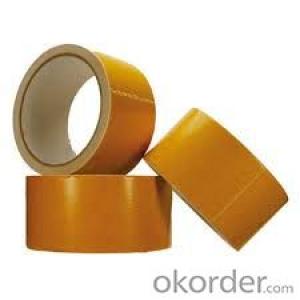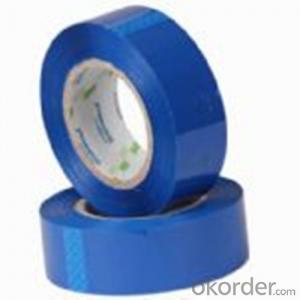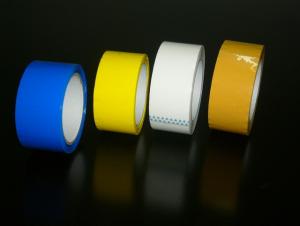Packaging Tape Sainsbury BOPP Film for Adhesive Tape
- Loading Port:
- Shenzhen
- Payment Terms:
- TT
- Min Order Qty:
- 3000USD roll
- Supply Capability:
- 1x 20 ft roll/month
OKorder Service Pledge
OKorder Financial Service
You Might Also Like
Quick details:
Material: BOPP
Use: Carton Sealing
Adhesive Side: Single Sided
Adhesive: Acrylic
Adhesive Type: Water Activated
Design Printing: Offer Printing
Place of Origin: China (Mainland)
color: clear, super clear, crystal clear, red, blue, brown, yellow, green etc
Specifications:
| ItemNo. | Carrier | Adhesive | Total Thickness | Initial Tack | Peel Adhesion | Holding Power | Tensile Strength | Elongation |
| BP-40 | BOPP film | water based acrylic | 40 micron | >18# | 0.5kgf/25mm | >24h | >30N/cm | <180% |
| BP-45 | BOPP film | water based acrylic | 45 micron | >18# | 0.5kgf/25mm | >24h | >30N/cm | <180% |
| BP-50 | BOPP film | water based acrylic | 50 micron | >20# | 0.5kgf/25mm | >24h | >30N/cm | <180% |
| BP-65 | BOPP film | water based acrylic | 65 micron | >24# | 7.88N/25mm | >40h | >30N/cm | <180% |
Application:
Bopp tape is mainly for Carton sealing & packing, Light duty packaging, bundling, holding, and other office & household use.
Packing:
Paper Core ID: 76mm
Jumbo size: 1280mm x 4000m; 1620mm x 4000m
Cut roll size: As per customer's requirement
Cut rolls: 6 rolls per shrink, 36/54/72 rolls per carton with or without pallet
Jumbo rolls & log rolls: Packed with kraft paper and stretch wrap film, with or without pallet
Company Advantages:
1. Stable financial status and sound reputation as a state invested corporation under the direct administration of the State Council of PRC;
2. CNBM’s world wide influence as one of the 500 global fortunes specializing in building materials including adhesive tapes;
3. More than a decade’s exporting experience and technology in adhesive tape industry;
4. Preferencial shipping channels, with a separate team dealing with shipping.


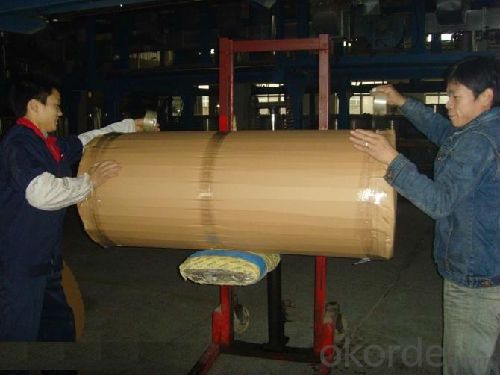


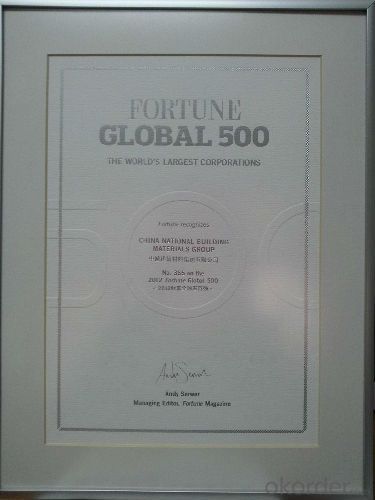

- Q: What are the benefits of using high-visibility packaging tape?
- High-visibility packaging tape offers numerous benefits for various applications. Firstly, its bright color, often fluorescent or neon, significantly enhances visibility, making it easy to locate and identify packages. This is particularly advantageous in busy shipping and receiving areas where numerous packages are handled simultaneously, ensuring efficient and accurate sorting. Additionally, high-visibility packaging tape increases safety in the workplace. Its bright color acts as a visual warning, alerting employees and customers to potential hazards, such as fragile or dangerous contents. This reduces the risk of mishandling or accidents, preventing damage to products and potential injuries to individuals. Furthermore, the use of high-visibility tape improves inventory management. With its distinctive color, it becomes simpler to differentiate between different packages, aiding in organization and tracking. This is particularly beneficial in warehouses or storage facilities where large quantities of goods are stored, enabling efficient stock management and easy identification during inventory checks. Another advantage of high-visibility packaging tape is its ability to deter theft or tampering. The vibrant color draws attention to any unauthorized attempts to open or tamper with the package, discouraging potential thieves or unauthorized persons from interfering with the contents. This enhances security and helps protect valuable or sensitive items during transit. Moreover, high-visibility packaging tape is often designed with strong adhesive properties, ensuring secure sealing of packages. This prevents accidental openings during transportation, safeguarding the contents from damage, loss, or contamination. The reliable sealing also helps maintain the integrity of the packaging, ensuring that it withstands various environmental conditions, such as humidity or temperature fluctuations. In conclusion, the benefits of using high-visibility packaging tape include improved visibility, enhanced safety, efficient inventory management, theft deterrence, and secure sealing. These advantages make it an excellent choice for businesses and individuals involved in shipping, receiving, and storing packages, providing peace of mind and facilitating smooth operations.
- Q: What materials are commonly used for packaging tape?
- The most commonly used materials for packaging tape are polypropylene, PVC, and paper.
- Q: How do you choose the right packaging tape for your needs?
- When it comes to selecting the appropriate packaging tape for your requirements, there are various factors to take into consideration. To begin with, ponder over the nature of the items you will be packaging. If you are dispatching weighty or bulky items, you will need a tape that is sturdy and long-lasting, such as a heavy-duty or reinforced tape. Conversely, if you are packaging lightweight items, a standard packaging tape may suffice. Moving forward, contemplate the surroundings in which the package will be stored or transported. If the package will be exposed to extreme temperatures or moisture, it is advisable to opt for a tape that is resistant to these conditions, such as a weather-resistant or waterproof tape. This will ensure that your package remains intact and safeguarded throughout its journey. Furthermore, take into account the surface onto which the tape will be affixed. If you are packaging boxes with smooth surfaces, a standard adhesive tape will suffice. However, if you are packaging boxes with rough or textured surfaces, you may require a tape with a stronger adhesive, such as an acrylic or hot melt tape, to ensure proper adhesion. Additionally, consider the length and width of the tape roll. If you will be packaging a large number of items, it may be preferable to select a tape roll with a longer length to minimize the need for frequent replacements. Similarly, if you are packaging larger boxes, a wider tape roll may provide better coverage and security. Lastly, take your budget into account. Packaging tapes are available in a range of prices, so it is crucial to strike a balance between your needs and your budget. While it may be tempting to opt for cheaper options, bear in mind that investing in a higher-quality tape can save you time, effort, and potential damages in the long run. By considering the type of items, environmental conditions, surface texture, roll length and width, and your budget, you can choose the appropriate packaging tape that caters to your specific needs and offers the necessary strength, durability, and security for your packages.
- Q: Is packaging tape safe to use on painted furniture?
- Yes, packaging tape is generally safe to use on painted furniture. It is designed to adhere to various surfaces, including painted surfaces, without causing damage or leaving residue when properly applied and removed. However, it is always recommended to test a small, inconspicuous area first to ensure compatibility and to handle the tape with care to avoid any potential paint or finish peeling.
- Q: Can packaging tape be used for sealing plastic containers with liquids?
- Yes, packaging tape can be used for sealing plastic containers with liquids. However, it is important to ensure that the tape is securely applied and that the container is leak-proof to prevent any spillage or leakage.
- Q: Xiangxi investment sealing tape how much profit
- Not wait for shipment, then compensate 4000 yuan per ton, of course, may rise to 15000 yuan a ton, but this risk is great, especially those who have just entered the line
- Q: Can packaging tape be used for sealing storage containers?
- Yes, packaging tape can be used for sealing storage containers. Packaging tape is specifically designed to provide a strong and secure seal on various types of materials, including storage containers. It is commonly used in packaging and shipping industries to seal boxes, cartons, and other containers. The adhesive used in packaging tape is strong enough to withstand the rigors of storage and transportation, ensuring that the contents of the container remain safe and protected. Additionally, packaging tape is easy to apply and provides a reliable seal that helps prevent dust, dirt, and moisture from entering the storage container. Therefore, using packaging tape for sealing storage containers is a convenient and effective solution.
- Q: What are the considerations for using packaging tape on plastic or polyethylene bags?
- When using packaging tape on plastic or polyethylene bags, there are a few key considerations to keep in mind. Firstly, it is important to ensure that the tape used is compatible with the material of the bag. Plastic or polyethylene bags are typically smooth and slick, so using a tape with a strong adhesive specifically designed for such surfaces is crucial to ensure proper adhesion. Additionally, it is important to consider the strength and durability of the tape, especially if the bag will be subjected to rough handling or transportation. Opting for a tape with strong tensile strength and tear resistance will help to prevent the tape from coming loose or the bag from tearing. Lastly, considering the removal process is important, especially if the bag needs to be reopened or accessed frequently. Choosing a tape that allows for easy and residue-free removal can be beneficial in such cases. Overall, selecting the right type of tape that is compatible with the plastic or polyethylene bag, offers good strength and durability, and provides easy removal can help ensure effective and secure packaging.
- Q: How do I prevent packaging tape from becoming too loose?
- Here are some helpful suggestions for preventing packaging tape from becoming loose: 1. Opt for high-quality packaging tape: Invest in packaging tape that boasts a strong adhesive. Inferior quality tapes tend to lose their stickiness quickly, resulting in loose packaging. 2. Ensure cleanliness and dryness of surfaces: Prior to applying the tape, make sure that the surfaces are clean and dry. Dust, moisture, or oil can weaken the adhesive and cause the tape to loosen. 3. Apply firm pressure: When sealing a package, exert firm pressure while affixing the tape onto the surface. Be sure to run your hand or a flat object along the length of the tape to ensure proper adhesion. 4. Utilize overlapping tape: Instead of using only a single strip of tape, overlap it by a few inches. This overlapping technique provides added strength and diminishes the likelihood of the tape becoming loose. 5. Avoid extreme temperature fluctuations: Extreme temperature changes can adversely affect the adhesive properties of packaging tape. Refrain from storing packages in areas with high humidity or extreme temperature variations, as this can cause the tape to loosen. 6. Strengthen with extra tape: If you are sealing a heavy or bulky package, contemplate reinforcing it with additional tape. Apply extra strips of tape across the sides or diagonally to provide supplementary support and minimize the risk of the tape coming loose. 7. Properly store packages: When storing packages, ensure they are stacked correctly and not subjected to excessive pressure or weight. Inadequate storage conditions can cause the tape to loosen over time. By adhering to these recommendations, you can effectively prevent packaging tape from becoming too loose, thereby guaranteeing that your packages remain securely sealed during transit or storage.
- Q: What are the benefits of using low-noise packaging tape?
- There are several benefits of using low-noise packaging tape. Firstly, low-noise packaging tape is designed to minimize or eliminate the loud noise that traditional packaging tapes often make when they are being unwound or dispensed. This can be particularly beneficial in office or retail environments where there is a need for a quiet and peaceful atmosphere. By reducing the noise level, low-noise packaging tape helps to create a more comfortable and less disruptive work environment. Secondly, low-noise packaging tape is often made from high-quality materials that provide superior strength and adhesion. This means that it offers a reliable and secure seal on packages, reducing the risk of contents becoming damaged or lost during transit. The strong adhesive properties of low-noise packaging tape ensure that it stays in place even in challenging conditions, such as extreme temperatures or high humidity. Another benefit of low-noise packaging tape is its ease of use. It is typically designed to be easily dispensed from a tape dispenser, allowing for quick and efficient application. This saves time and effort for users, especially in high-volume packaging operations or busy shipping departments. The smooth and consistent unwinding of low-noise packaging tape further contributes to its ease of use, preventing tangles or snags that can lead to frustration and wasted tape. Additionally, low-noise packaging tape is often available in a variety of sizes, widths, and colors, allowing for customization according to specific packaging needs. This versatility ensures that it can be used for a wide range of applications, from sealing small envelopes or boxes to securing larger packages for shipping. The different color options can also help with organization and identification, making it easier to distinguish between different types of packages or to mark fragile items. In summary, the benefits of using low-noise packaging tape include reducing noise levels, providing reliable and secure seals, offering ease of use, and allowing for customization. By choosing low-noise packaging tape, businesses can improve the overall packaging experience for both employees and customers, leading to increased productivity, customer satisfaction, and the protection of valuable goods.
1. Manufacturer Overview
| Location | Fujian, China |
| Year Established | 1994 |
| Annual Output Value | Above US$ 1000 Million |
| Main Markets | Southeast Asia; South America; Eastern Europe; North America; Northern Europe; South Asia; Western Europe; Africa; Mid East |
| Company Certifications |
2. Manufacturer Certificates
| a) Certification Name | |
| Range | |
| Reference | |
| Validity Period |
3. Manufacturer Capability
| a) Trade Capacity | |
| Nearest Port | Shenzhen |
| Export Percentage | 41% - 50% |
| No.of Employees in Trade Department | 101-200 People |
| Language Spoken: | English; Chinese |
| b) Factory Information | |
| Factory Size: | Above 10,000 square meters |
| No. of Production Lines | Above 10 |
| Contract Manufacturing | produce single sided tapes,double sided tapes, masking tape, Opp tape |
| Product Price Range | Low; Average |
Send your message to us
Packaging Tape Sainsbury BOPP Film for Adhesive Tape
- Loading Port:
- Shenzhen
- Payment Terms:
- TT
- Min Order Qty:
- 3000USD roll
- Supply Capability:
- 1x 20 ft roll/month
OKorder Service Pledge
OKorder Financial Service
Similar products
Hot products
Hot Searches
Related keywords












